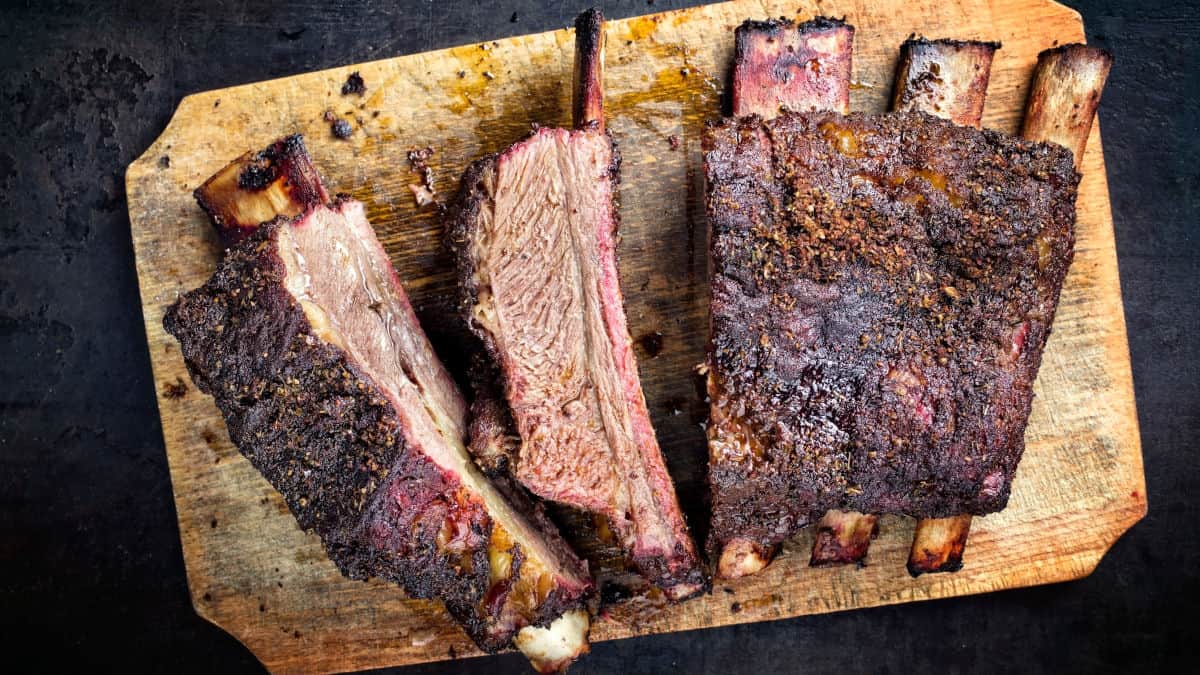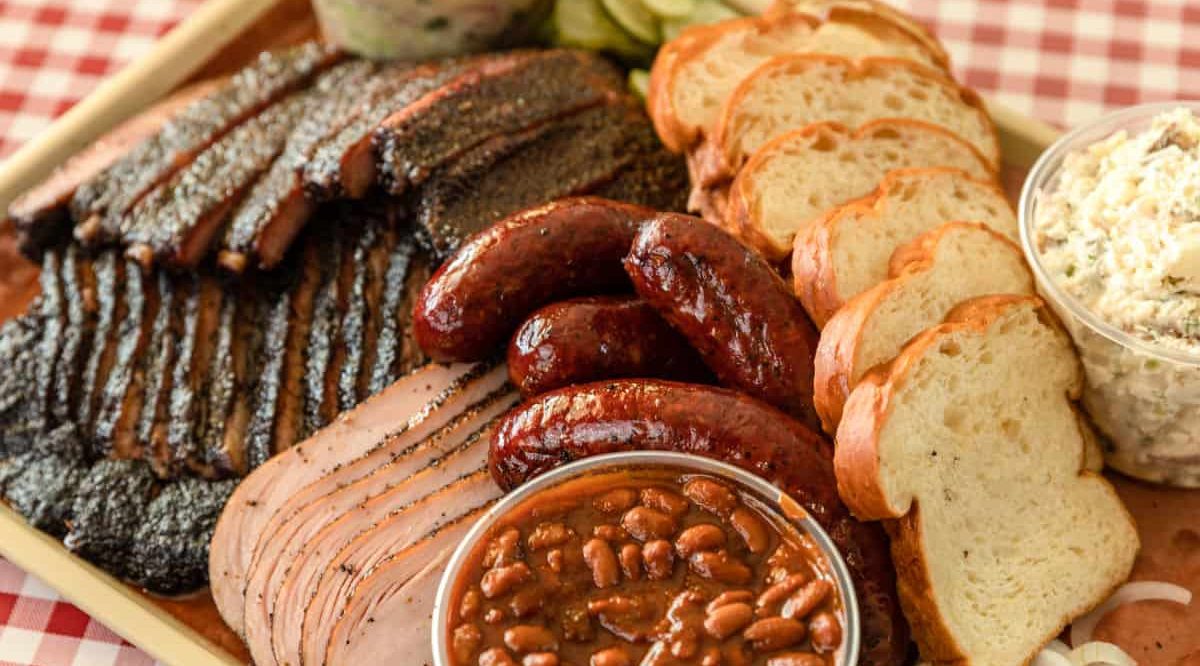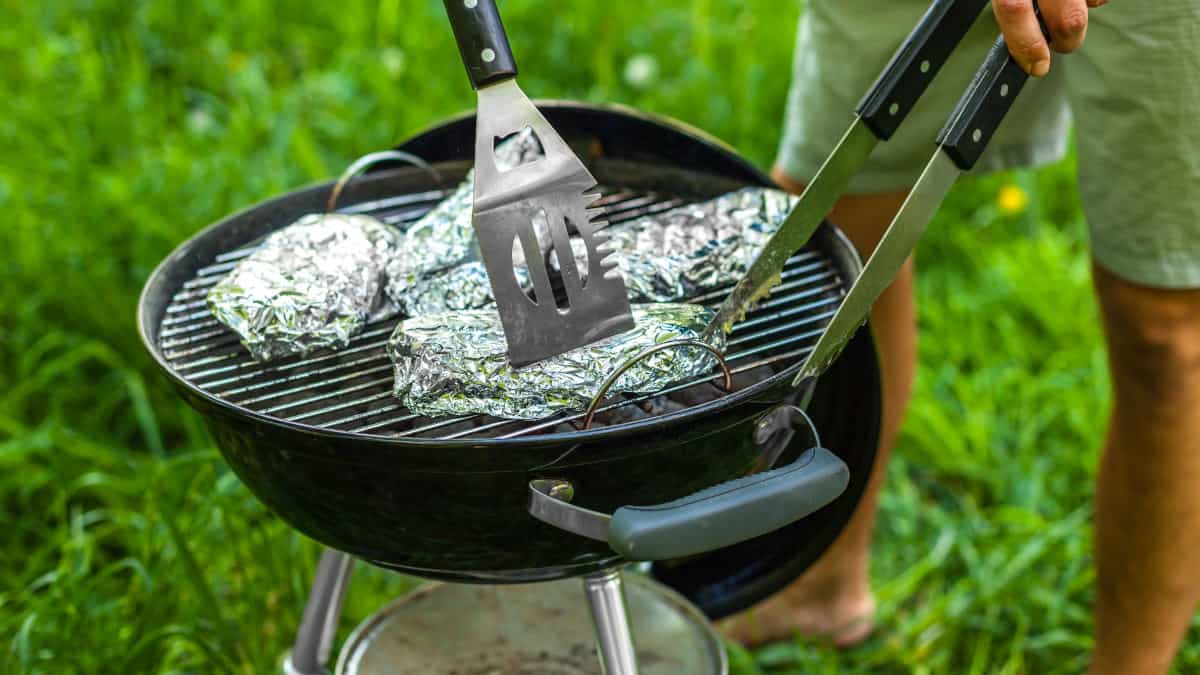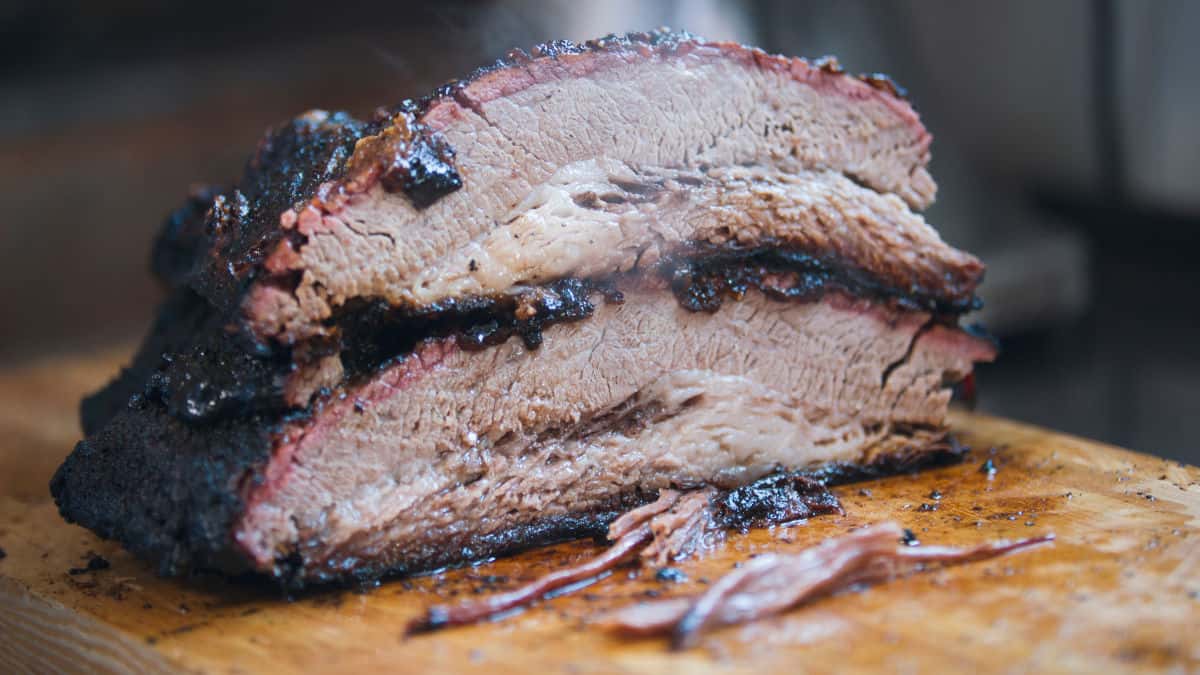With the popularity of beef ribs growing day by day, it’s only fair that we take a closer look at this delicious beef cut that would make Fred Flinstone drool.
Pork ribs are known to be reasonably sized, succulent, somewhat easy to fit in a smoker, and overall delicious. On the other hand, beef ribs are large, tender, juicy, somewhat tricky to fit into the average smoker, but overall finger-lickin’-good.
Like pork ribs, there are various types of beef ribs that we’re going to be looking closer to today. We’re also going to look at the main differences between pork and beef ribs, and how they’re prepared.
Why are Beef Ribs so Popular?
Beef ribs are, simply put, delicious, succulent, and primal. Who isn’t impressed when seeing a large cut of meat with bones on the smoker, covered in a flavorful seasoning rub, and cooked for hours to tenderize?
Beef ribs are well-marbled meat, meaning they have the right balance between red meat and fat. Fat adds flavor, which is why ribs are above-average on the flavor scale. Because of this deep beefy flavor, beef ribs don’t need more than a light seasoning — smoke it low ‘n’ slow-style over aromatic wood chunks or chips, and you will get fall-off-the-bone meat that simply melts in the mouth.
Furthermore, if you appreciate photogenic food, then you’ll be pleasantly surprised to see how well your freshly-smoked beef ribs will suit your Instagram-feed.
Types of Beef Ribs
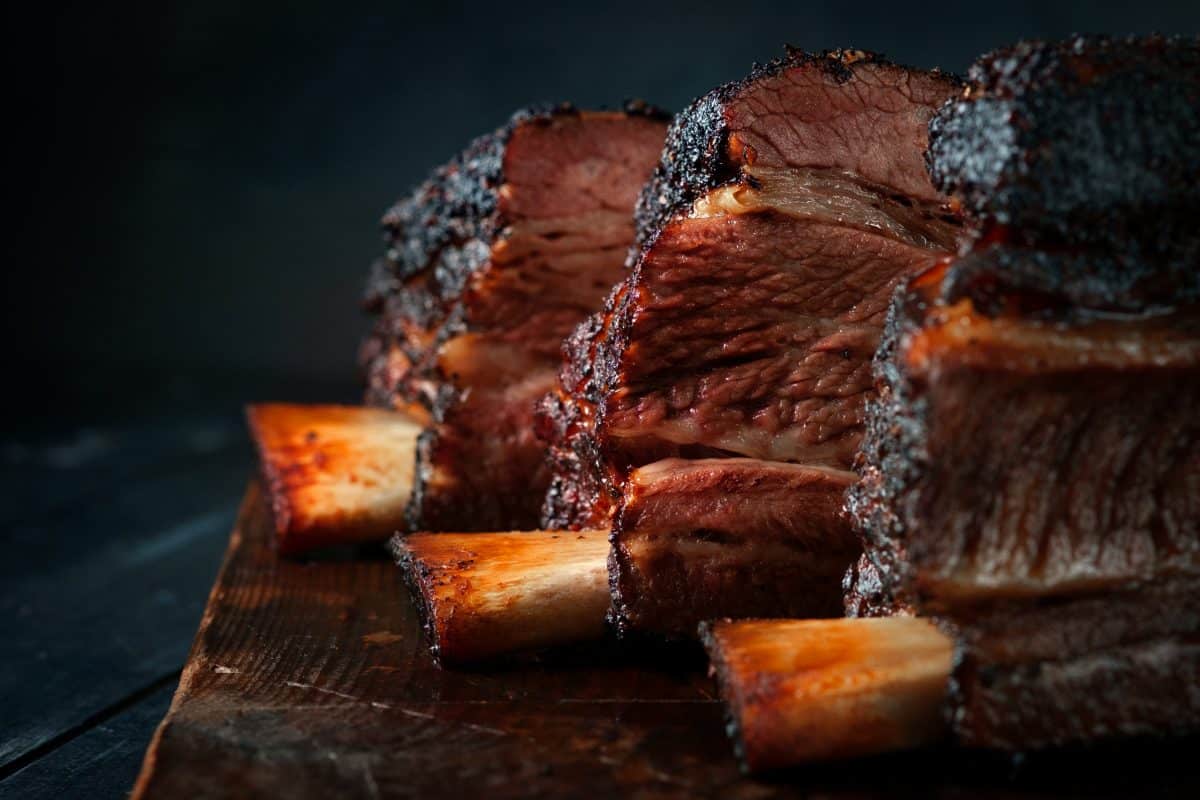
There are three types of beef ribs:
- Plate short ribs/beef short ribs.
- Chuck short ribs
- Back ribs.
You can kind of figure out where the ribs are located by their names — for instance, plate and chuck ribs are positioned towards the belly of the cow, whereas back ribs are attached up top on the prime rib.
Plate Short Rib/Beef Short Ribs
These are big cuts that look similar to brisket on bones but are oh-so-tender and delicious to eat. In fact, plate ribs are so large, a single bone can weigh between 1 and 2.5 pounds!
Plate ribs are so beefy in flavor; it’s almost too good to believe when you first chomp your teeth into this beefy heaven. This cut is found in nearly every barbecue joint in Texas being served as the main attraction.
How to Cook Plate Ribs
Not only do plate ribs look like a bony brisket, but they’re also similar in composition. You see, plate ribs have the same fat content as brisket; therefore, you need to cook them low and slow to help render the fat without drying it out.
The meat doesn’t require more than a simple salp and pepper rub to help bring out the natural flavors.
Fun fact: In the UK, plate ribs are cooked with the ribs intact, making them look like a ladder. They’re commonly referred to as “Jacob’s Ladder” for this very reason.
Chuck Short Rib
Chuck short ribs have a lot of meat, similar to plate ribs, but the bone is slightly smaller. It’s one of the more common ribs to find in most supermarkets. They’re usually between 3 and 6 inches in length with a mass of meat sitting on top of the bone. You can also find chuck short ribs as boneless or cut in thinner strips about ½-inch thick.
How to Cook Chuck Short Ribs
Chuck short ribs are commonly used in Korean barbecue where it gets marinated with a sweet Asian sauce before it’s grilled over direct heat.
But, if low n slow cooking is more your style, you can surely smoke them in a smoker similar to plate ribs, just shorten the cooking time.
Beef Back Ribs
Back ribs are significantly different from plate and chuck ribs, as they’re located higher up on the back of the cow. Back ribs are also commonly part of prime rib roasts.
Prime rib is one of the more expensive cuts on the cow; therefore, most butchers will usually try to keep more meat on the prime rib roast and less on the back rib. Because of this, there’s generally not much meat on the bones but more in between the bones.
How to Cook Back Ribs
Due to the smaller size of back ribs, you can simply cook them over indirect heat on the grill. Add a few chunks of wood for added smoke if needed. Back ribs are even better with a sweet barbecue sauce. You can also cook them on a smoker, but the back cut won’t need nearly as long as plate or chuck ribs.
Differences Between Pork and Beef Ribs
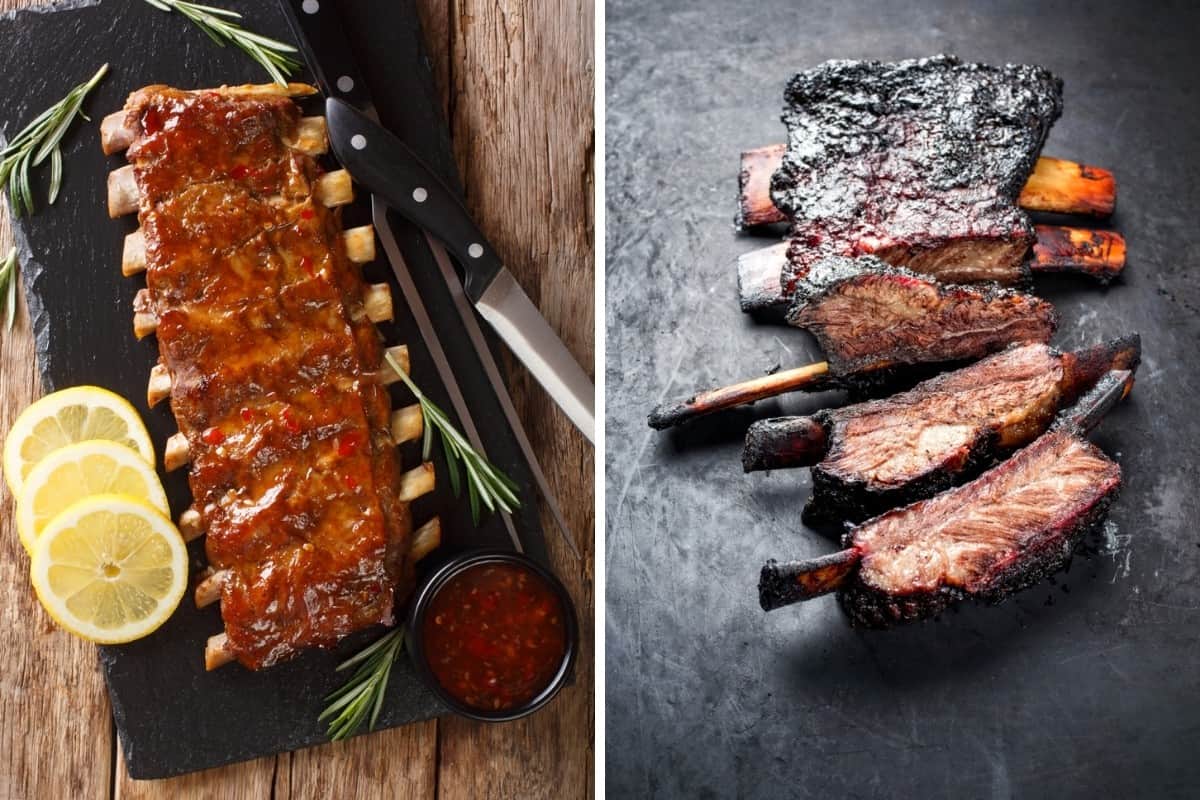
Many people wonder what makes beef ribs any different to pork ribs, besides the undeniable fact that they come from two different animals.
Size: Beef ribs are much larger than any type of pork ribs — no surprise here given that a steer is significantly bigger than a hog.
Composition: Beef ribs contain more gelatinous fat that runs through the meat as it cooks. This is what makes beef ribs so similar to beef brisket in flavor. It’s almost like eating a rendered, smokey steak.
Seasoning: Beef ribs usually don’t need more than a mere salt and pepper rub to taste amazing — of course, this depends on the recipe. On the other hand, pork doesn’t have the same meaty flavor and will often benefit from a rub containing a mixture of different spices and even sugars, or a flavorful marinade.
The Bony End
We hope we gave you a quick inside into the world of beef ribs. As you can see, there’s much more to beef ribs than solely meat and bones — there are different types and cooking methods to try out.
What is your favorite kind of rib? Let us know in the comments below.

